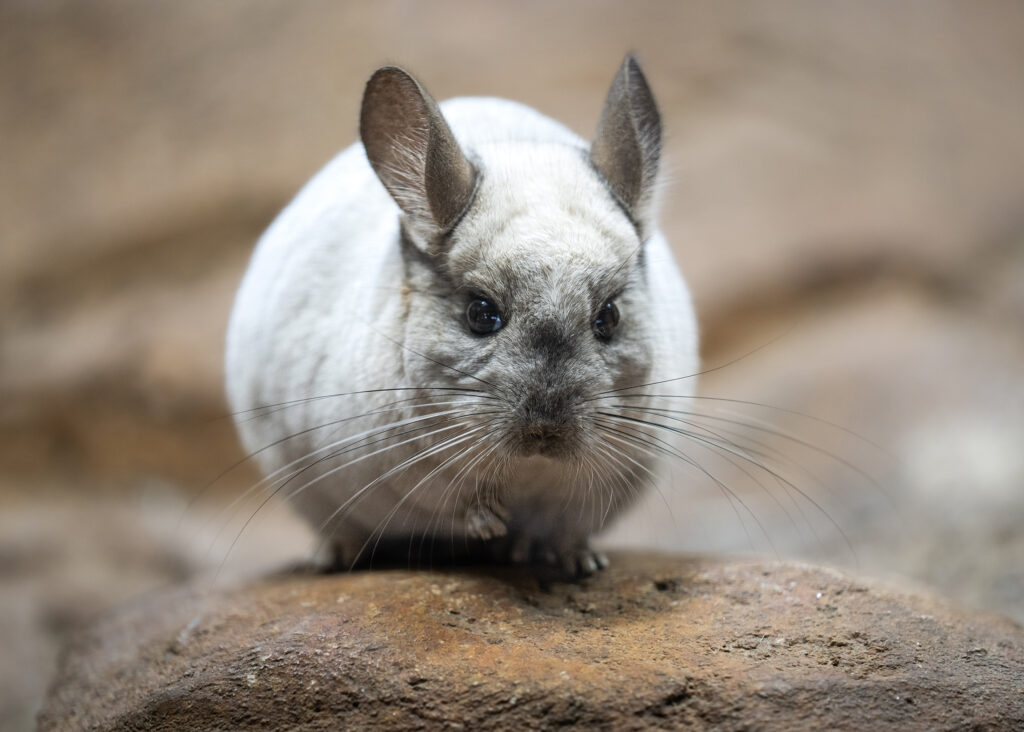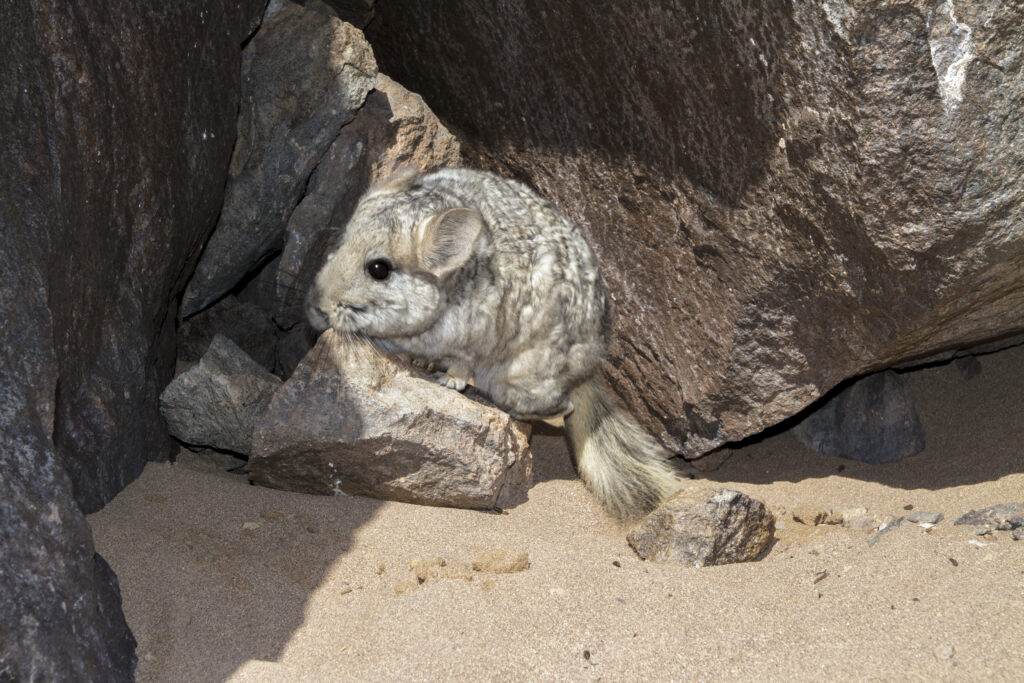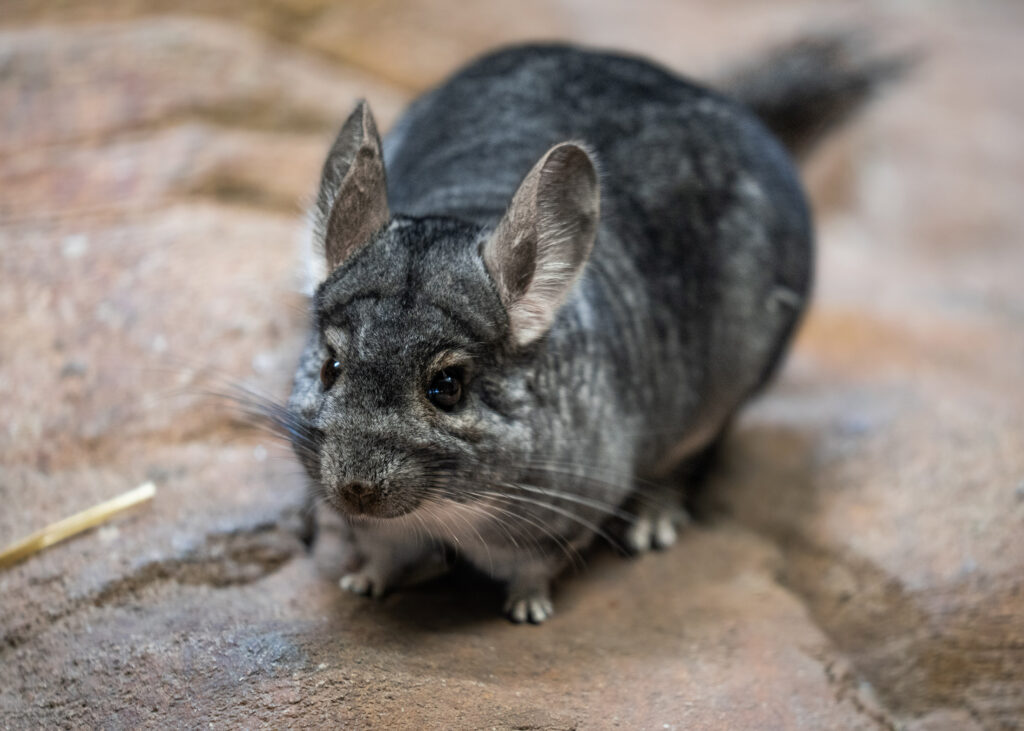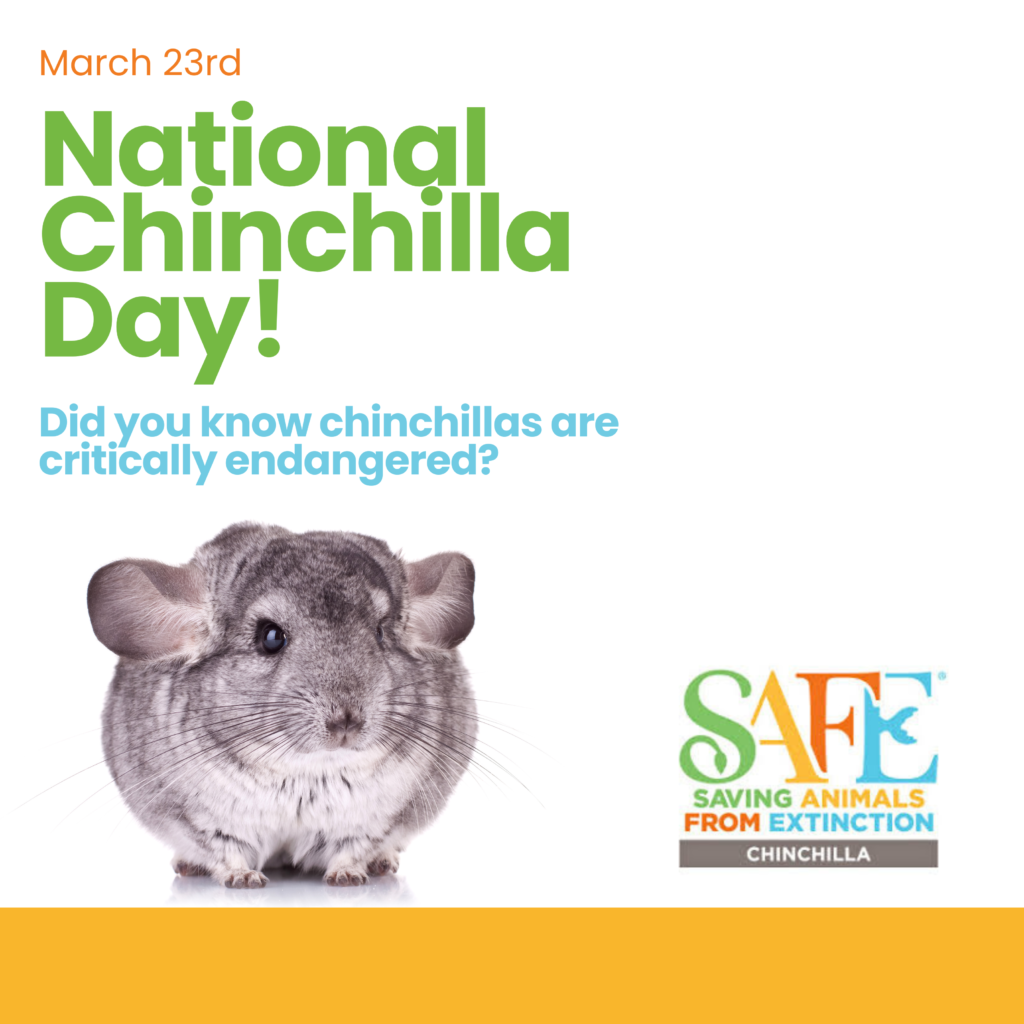With their peppy rodent energy and exceptionally soft fur, it’s no surprise that chinchillas are popular animals. But their numbers in the wild are dwindling.
Guests at Stone Zoo have been able to watch a pair of long-tailed chinchillas groom, graze and bound about their habitat since Buttercup and Blossom moved to the Windows to the Wild. Chinchillas are known for that “parkour” style of locomotion. In fact, there’s a name for that. The acrobatic little rodents are a richochetal species, meaning they are experts at bouncing between boulders as they move across their rocky, high-elevation habitat in the Andes Mountains.

The chinchilla is also notable for having the densest fur of all land mammals. 20,000 hairs grow in a single square inch with 50 hairs sprouting from each follicle! (To put that into perspective, humans have between 800 and 1,200 hairs per inch on their head.) This dense, wildly soft fur takes meticulous maintenance. Frequent dust baths, wriggling in fine sand, helps remove oils and keep their fur clean and dry. So those trays of dust you see in the habitat are for chinchilla bath time!
Chinchillas In a Tough Spot
Unfortunately, their incredibly soft fur led directly to the chinchilla’s rapid demise in the wild as the pelts became hugely coveted in the international fur trade. Both species of chinchillas — the short-tailed and the long-tailed — were driven to the brink of extinction by hunting and commercial exploitation throughout their range, which once included Bolivia, Peru, Argentina, and Chile. Now mining ventures threatens the native habitats and recovery of both species. Short-tailed and long-tailed chinchillas are currently listed as Endangered by the IUCN Red List.

Chinchillas Need Our Help
Zoo New England is partnering with the Chinchilla SAFE program to protect short-tailed chinchillas in their native habitats. We posted a blog entry introducing this partnership a while back, and the unfortunate truth still remains: the species’ only hope is to safeguard the small populations of remaining wild individuals and their habitat since domestic chinchillas are unfit for reintroduction.
AZA’s SAFE Chinchilla Program, with support from Zoo New England, is working with the National Zoo of Chile, the Chilean Ministry of the Environment, the Corporación Nacional Forestal (CONAF), and other in-country partners to study the remaining wild chinchilla colonies there and use the data to conserve this species and its habitat. The field team is studying and protecting three colonies, while a fourth was recently discovered in an area where the chinchilla was thought to have been eradicated many years ago. Education, training, and stakeholder engagement campaigns also continue to encourage local communities to protect the remaining chinchilla colonies. Our conservation team remains hopeful that we have a real chance of protecting this endearing little rodent in the wild.

We also hope that guests who visit Blossom and Buttercup at Stone Zoo, watching them adorably roll in their dust baths or spring about their habitat, will be inspired to protect their wild counterparts. Saturday, March 22, 2025, is a great day to visit because our volunteers will be manning an education station in honor of World Chinchilla Day (March 23). Come by to ask questions and get to know what makes these charming floofs worthy of protection. Not only will educators share tips for how you can help chinchillas at home, but your ticket purchase and membership will support our global conservation efforts, including our partnership with the Chinchilla SAFE program.

Happy Chinchilla Day!
